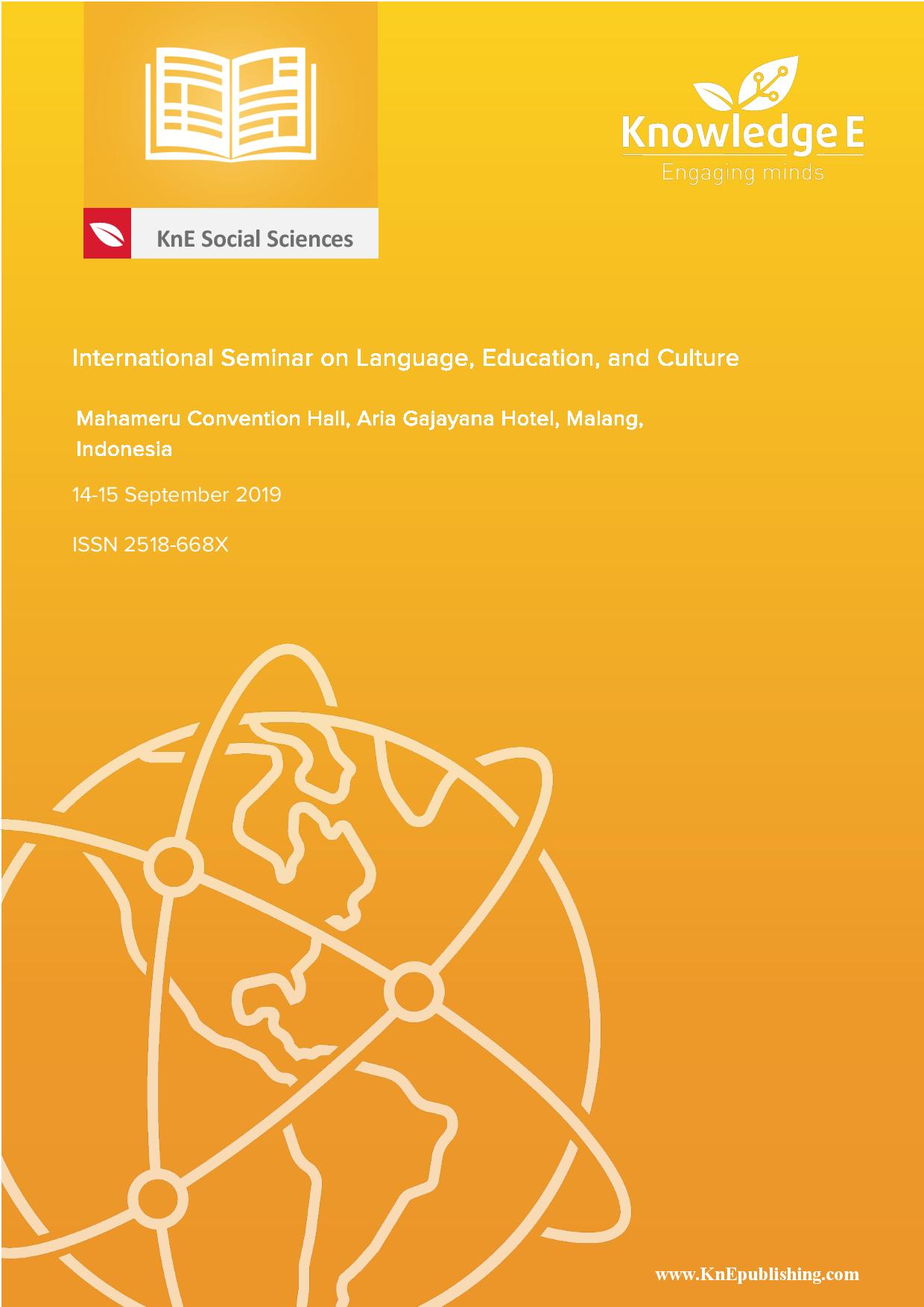The Religious Text ‘Panaturan’ of the Dayak Ngaju Community
DOI:
https://doi.org/10.18502/kss.v4i4.6489Abstract
The ethnic of Dayak Ngaju is one of the Dayaks in Central Kalimantan. This ethic group has a native belief named Kaharingan, which is later on called as a religion. Kaharingan religion was previously called as Naju beliefs, Hiden religion and even Kafir or unbelievers. In its process, in 1972, this belief is associated within Hinduism or Hindu Kaharingan. This religion has a holly book, Panaturan, in which most of the texts are used by most of Dayak Ngaju community for religion purposes. To have a comprehensive picture of this religious text, this article used two approaches: semantic structures and its ideology to have a deeper relationship between text and thought. To see the religious text, two factors were examined, respectively the semantic structure and ideology to see cohesiveness and texture in text-ology. The findings show that Panaturan is a transformation of the Wedanta Scriptures which have been acculturated with local genius of the Dayak civilization. The participants on Panaturan indicate the ideology of this belief.
Keywords: religious text, semantic structures, ideology
References
Etika, Tiwi. 2011. Melihat Dayak dan Kaharingan. https://tiwietika-melihatdayakdankaharingan.blogspot. co.id/2011/
Johnstone, Barbara dan Marcellino, W.M. 2010. Dell Hymes and the Ethnography of Communica-tion. The Sage Handbook of Sociolinguistics. http://repository.cmu.edu/cgi/viewcontent.cgi?article= 1013&context=english
Luardini, M.A. Socio-Cultural Values of Traditional Communities: A Case Study of the Dayak in Kalimantan. Asian Culture and History Journal. Vol. 8, No. 2 April 2016. http://www.journaltocs.ac. uk/index.php
Luardini, M. A., Sutama, P., dan Natalina A. The River Civilization of the Balinese and Dayakese Legends, A Comparative Study on Anthropological Linguistics. Jurnal Kajian Bali, vol. 6, no. 1, April 2016 (pp. 1 -20) https://simdos.unud.ac.id/uploads/file_penelitian_1_dir/167b76183cae158e1620bd809a67937e.pdf
Luardini, M.A. 2009. The Ideology Of Dayak Ngaju Community Of Central Kalimantan Implied Within Legends. Proceeding of International Congres of Kongres International Masyarakat Linguistik Indonesia (KIMLI). http://citeseerx.ist.psu.edu/viewdoc/summary?doi=10.1.1.610.4129
Majelis Besar Agama Hindu Kaharingan (MB-AHK). 2015. Panaturan. Palangka Raya: Departemen Agama Provinsi Kalimantan Tengah.
Pranata. 2009. Upacara Ritual Perkawinan Agama Hindu Kaharingan. Surabaya: Paramita.
Riwun. 2012. Mantra Tandak Dalam Upacara Tantulak Ambun Rutas Matei (Upacara Kematian) Menurut Umat Hindu Kaharingan. Jurnal Tampung Penyang. Vol 10, No 1. http://jurnal.stahntp.ac.id/index.php/ tampungpenyang/article/view/63
Sibarani, Robert. 2013. Pendekatan Antropolinguistik. Dalam Menggali Kearifan Lokal Sebagai Identitas Bangsa. Proceeding of The 5Th International Conference on Indonesian Studies: Ethnicity and Globalization. https://icssis.files.wordpress.com/2013/09/2013-02-23.pdf
Sugiarto, Wakhid. 2016. Eksistensi Agama Hindu Kaharingan di Palangka Raya Kalimantan Tengah. Jurnal Multilingual & Multireligius, Vol 15, No. 3. pp.102-116.
Suharyo, Surono, dan Mujid F.A. 2014. Bahasa Dan Ideologi: Mengungkap Ideologi dan Kekuasaan Simbolik di Balik Penggunaan Bahasa (Kajian Teks Media Melalui Analisis Wacana Kritis). Humanika Vol. 19 No. 1pp. 42-58.
Sutama, P., Maria A. L., Natalina A. 2016. Bahasa Bali dan Dayak Ngaju, Budaya Inti dan Identitas Diri Penuturnya: Kajian Pemertahanan Bahasa. Preceeding of KIMLI.
Sutama, Putu. 2016. Konsepsi Keseimbangan Alam Pemikiran Tradisional Etnik Bali. Suatu Kajian Antropolinguistik. Proceeding in Seminar Nasional Sastra dan Budaya, Universitas Udayana.
Thompson, John B. 2005. Filsafat Bahasa dan Hermeneutik (translated by Dr. Khozin Afandi). Surabaya: Visi Humanika

